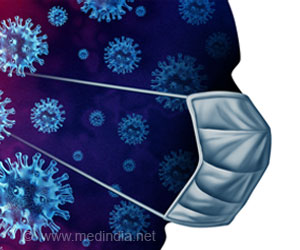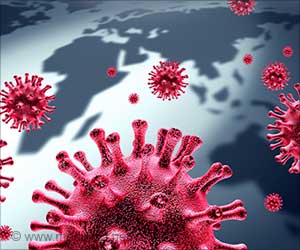The US is seeing a major rise in COVID-19 infections, driven by new variants and worsened by the scorching summer.

CDC National Wastewater Surveillance System (NWSS)
Go to source). According to the US Centers for Disease Control and Prevention (CDC)’s wastewater dashboard, the viral activity levels in wastewater reached their highest point since July 2022, Xinhua news agency reported.
‘Did You Know?
During the peak of the pandemic, the US saw over 200,000 new COVID-19 cases per day. #covid19 #infections #summer’





This tracking method, which provides a more comprehensive picture of viral spread than traditional testing methods, indicated that nationally, the wastewater viral activity level for COVID is currently "very high," noted the CDC’s latest monitoring report last week. During the peak of the pandemic, the US saw over 200,000 new COVID-19 cases per day. #covid19 #infections #summer’
The situation was particularly dire in the Western US, which has been identified as having "the highest wastewater viral activity level" for COVID, according to the CDC.
The agency also reported an increase in emergency room visits and hospitalisations due to COVID-19 infections nationwide. In May, the hospitalisation rate was about one person per 100,000 people.
However, by August 3, the figure had steadily risen to 4.2 per 100,000, according to the CDC’s surveillance system, which comprises over 300 acute-care hospitals in 13 states.
The current surge has surpassed last summer’s heights and continues to increase, as extreme heat forces people to stay indoors, where the virus spreads more easily, and as many precautions have largely been abandoned.
Advertisements
New COVID Variants Drive Surge
California and Arizona emerged as focal points of concern in the summer surge. Both states are experiencing a substantial rise in infection rates. In California, data from 43 wastewater reporting sites showed that COVID levels were high, comparable to the peak of the winter surge earlier this year, the report said.The situation in Arizona is equally concerning, with a recent AZ Mirror report indicating that the KP.3 variant had become the dominant strain, accounting for more than 50 per cent of all positive cases in the state.
Advertisements
These FLiRT strains, sub-variants of Omicron, accounted for the majority of COVID-19 cases in the US at the beginning of July, according to a recent Yale Medicine report.
One of the predominant FLiRT sub-variants, KP.3.1.1, has demonstrated increased transmissibility compared to its predecessors.
The CDC data showed that this variant caused 27.8 per cent of the infections in the country, up from 14.4 per cent over a mere two-week period. Other factors contributing to the surge included increased human mobility during the summer months and the hot weather.
The Western states, in particular, are grappling with what experts call a "summertime surge" in COVID cases. The surge was driven by this year’s record high temperatures, and increased use of air conditioning, which can facilitate viral spread by drying out the air.
High temperatures drove people indoors, where the virus spread more quickly, contributing significantly to the summer surge in those regions suffering from extreme heat. A recent report from Johns Hopkins University highlighted that every summer since 2020 there has been a rise in COVID rates during July and August.
The hot weather, combined with human behaviour patterns and an easily mutating virus, creates "the perfect recipe" for COVID’s peak in the summer, it said.
While the country is already seeing a rise in COVID cases, the imminent start of the school year could potentially continue fueling the summer surge, presenting a significant challenge for public health officials and school administrators alike.
In response to the surge, the CDC recommended that everyone over the age of six months should get the updated COVID booster, which is expected in the coming weeks. However, the effectiveness of current vaccines against the KP.3 variant remains uncertain.
Preliminary findings suggested that this variant, like its relative KP.2, exhibits some resistance to antibodies generated by the most recent COVID-19 vaccines.
Reference:
- CDC National Wastewater Surveillance System (NWSS) - (https://www.cdc.gov/nwss/rv/COVID19-currentlevels.html)
Source-IANS















